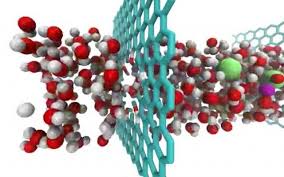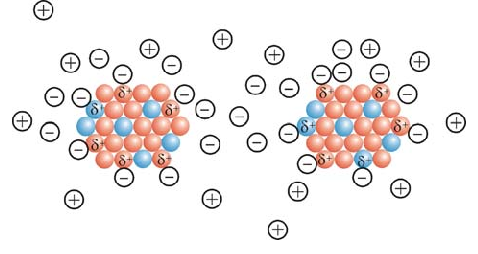3D Graphene Based Nano Cloud Capacitors (Segmentation and Structure) Based on Nano-Micro PhD
Researcher and author: PhD student Afshin Rashid
Note: Graphene is one of the most widely used carbon materials in nano-superconductor electrodes. Graphene has the theoretical maximum electrochemical capacity of about 21.7% and 93.0%, respectively.
The main problem is to reduce the capacitance of the nano-capacitors relative to the graphene plates and consequently to reduce the surface area and permeability of the electrolyte ions into the electrode. To address this challenge, 3D graphene networks (3DGNs) are interconnected as a material. Ideally used as a superconducting material. The unique properties and the highly porous structure of 3DGNs or the 3D structure of graphene provide not only a high level of availability, electrolyte penetration and pathways for electron transfer , but also an extraordinary scaffolding for active materials . Ultra-high performance 3D GNs, high capacity, excellent mechanical properties and high electrical conductivity provide unique application in charge-discharge and long-life capacitive nano- materials .
One of the ways to optimize the properties of energy storage systems is to develop new materials for use as electrode material in nano-capacitors. Carbon materials such as graphene, carbon nanotubes, graphite, carbon, etc. Nanvfaybr due to high electrical conductivity, cost and availability, biocompatibility and stability, good electrical conductivity plays an important role in nano-supercapacitor that one of the newest The carbon structures are three-dimensional graphene which due to its unique 3D structure facilitates the electrolyte penetration and has a high surface area and high electrical conductivity.
Graphene nano-capacitors are very similar in structure and mechanism to capacitors, except that the surface area of nano-electrodes is higher due to the high porosity in nano-graphene capacitors, which results in increased energy storage capacity of nano-capacitors. Compared to conventional capacitors. The energy density of graphene nano-supercapacitors is much higher than that of conventional dielectric capacitors. In this type of nano-supercapacitors are used high-porosity carbon compounds such as carbon , carbon nanotubes, active graphite and nano-carbon, nano-carbon . For a number of reasons, availability, relatively low price, non-toxicity, high stability and high electrical stability and thermal stability have become widely used in supercapacitors. The mechanism of storage of electrical charges in this type of nano-capacitors is the formation of nano-layers Dual electric.
Conclusion:
Graphene is one of the most widely used carbon materials in the electrode of graphene nano-capacitors, due to the adhesion of graphene plates to each other and consequently a decrease in the level and permeability of the electrolyte ions to the electrode, which reduces the conductivity and electronic storage capacity of the electrode. Recently, 3D graphene (3DGNs) with interconnected structure as an ideal material as a superconducting nano material has been investigated. The unique properties and the highly porous structure of 3DGNs, not only contribute to the high availability level , the electrolyte penetration and the creation of pathways for electron transfer to increase the energy density and energy storage capacity, but also an extraordinary scaffolding for active materials Has provided. From Graphene nanoparticles and carbon nanotubes are among the active ingredients. Since the internal resistance of the graphene capacitor nano material should be as low as possible, the use of carbon nanotube leads to increased conductivity of the capacitive nano-material, as well as the separation of the three-dimensional graphene plates, leading to a particularly high active surface area. And increase the storage capacity of the graphene nano-cloud capacitors.





